Search Results for Tag: Climate
Arctic Ocean acidification – kids’ stuff?
June 8th is World Oceans Day, so I am taking the opportunity to draw attention to the increasing acidification of the Arctic Ocean. CO2 makes the seas more acidic when it is absorbed from the air. This process is faster in cold water, making the Arctic particularly susceptible to this climate change impact. A study published earlier this year by scientists from the Arctic Monitoring and Assessment Programme (AMAP), based on monitoring over the last three years shows that the Arctic Ocean is rapidly accumulating carbon dioxide, leading to increased ocean acidification. This is having an impact on the marine ecosystem. The probem is exacerbated by increasing flows of fresh water from rivers and melting land ice. Creatures like pteropods, or sea butterflies, are likely to be harmed. Any marine life that needs calcium to form its skeleton or shell will be at risk, followed by the predators dependent on them.
My attention was drawn recently to a video cartoon produced back in 2009 aimed at teaching young people about ocean acidification, a concept which is not easy to grasp. I think it is great! Well done kids!
The animation was produced by pupils from Ridgeway School (Plymouth, UK) and Plymouth Marine Laboratory with funding from EPOCA the European Project on Ocean Acidification (www.epoca-project.eu). I recommend a look. Adults can learn something from it as well as kids! It is a great way to explain the concept, an entertaining video, and the idea of teaching young people about the problems our lifestyles are causing is a key element in securing a sustainable future. I recently acquired a copy of a book in German with a similar aim: Tessi & Tipo. Die Entdeckung der Ozeanversauerung. (ISBN 978-3-86918-204-9)It was written by Antje Funcke and Konstantin Mewes, young scientists at AWI, the Alfred—Wegener-Institut, Germany’s polar science body. Nice work!
The Oslo-based “Center for International Climate and Environmental Research” has a good summary of the AMAP report on its website. I reported on an EPOCA experiment to measure ocean acidification in the Arctic off Spitzbergen in 2010. Greenpeace had helped the scientists by offering the Esperanza to transport the “mesocosms” for the experiments up north. The story is online here: Scientists enter unusual alliance to study Arctic Ocean.
Arctic summers to be ice-free earlier?
Scientists studying Arctic sea ice say ice-free summers could be on the horizon sooner than many expected. A new analysis by NOAA scientists James Overland (NOAA Pacific marine Environmental Laboratory) and Muyin Wang (NOAA Joint Institute for the Study of Atmosphere and Ocean at the University of Washington) considered three methods of predicting when the Arctic will be nearly ice free in the summer. All three suggest nearly ice-free summers in the Arctic before the middle of this century, says Wang, although the actual dates differ widely. One method suggests the Arctic could be nearly sea ice free in summer as early as 2020.
“Rapid Arctic sea ice loss is probably the most visible indicator of global climate change; it leads to shifts in ecosystems and economic access, and potentially impacts weather throughout the northern hemisphere,” said Overland. “Increased physical understanding of rapid Arctic climate shifts and improved models are needed that give a more detailed picture and timing of what to expect so we can better prepare and adapt to such changes. Early loss of Arctic sea ice gives immediacy to the issue of climate change.”
The paper was published recently online in Geophysical Research Letters.
Overland said the differences between the models could lead some people to conclude that models are not useful. In fact the opposite is the case, he said. “Models are based on chemical and physical climate processes and we need better models for the Arctic as the importance of that region continues to grow.”
Taken together, the range among the multiple approaches still suggests that it is very likely that the timing for future sea ice loss will be within the first half of the 21st century, with a possibility of major loss within a decade or two, the authors say.
Other recent studies have indicated the key role of shrinking Arctic sea ice in influencing our weather. The shrinking sea ice is shifting polar weather patterns, especially in autumn and winter, according to one new climate modeling study.
Researchers looked at weather patterns in 2007, when sea ice covering the Arctic Ocean hit one of its lowest summer extents since satellite tracking began in the late 1970s.
In autumn and winter, when sea ice would normally insulate the ocean from frigid Arctic air temperatures, the small ice pack meant lots of heat could escape from the ocean into the atmosphere, the study found. The heating changed atmospheric circulation patterns in the Arctic, said study leader Elizabeth Cassano, a climate scientist at the Cooperative Institute for Research in Environmental Sciences (CIRES) in Boulder, Colorado. The results were published May 21 in the International Journal of Climatology.
Becky Oskin from LiveScience talked to Cassano about the study and quotes: “What we saw, particularly in the fall and winter, was a decrease in [atmospheric] pressure over the areas of open water.” Areas of high and low pressure drive weather, with low pressure producing stormier weather and high pressure leading to clear, calm days, Cassano said. The group’s computer model generally agreed with weather records from the latter half of 2007, according to the study.
While the summer ice melt had a significant effect into the winter, there was little change in weather patterns in early 2007, before the ice pack shrank, the study found. However, Cassano points out that the climate model doesn’t include a major high-pressure system that was in the Beaufort Sea north of Alaska and played a role in the big ice melt. Its absence could affect the modeling results.
The researchers now plan to examine how the feedback between sea ice and the atmosphere alters weather in the United Statse and other regions, Cassano said. “There’s an open question of how these changes that we see in the Arctic influence the weather that we see here in the mid-latitudes,” she said.
Given the weird weather we are experiencing in different parts of Europe at the moment, interest in whether climate change could be directly or indirectly responsible is high. Finnish Lapland has been experiencing a heatwave. Colleagues of mine have returned from the south of France complaining it was unexpectedly cold. Here in the normally mild Rhineland, we have also had very low temperatures and heavy rain. Meanwhile southern and eastern parts of Germany are being hit by severe flooding.
Renowned German scientist Stefan Rahmstorf and his colleagues at the Potsdam Institute for Climate Impact Research have apparently been contacted by various media, asking them if the rain and flooding are connected to climate change. He refers readers to a study on extreme weather they published in Nature Climate Change a year ago. Let me close by sharing his quote from that study, which he shares again in the climate blog SciLogs:
“Many climate scientists (including ourselves) routinely answer media calls after extreme events with the phrase that a particular event cannot be directly attributed to global warming. This is often misunderstood by the public to mean that the event is not linked to global warming, even though that may be the case — we just can’t be certain. If a loaded dice rolls a six, we cannot say that this particular outcome was due to the manipulation — the question is ill-posed. What we can say is that the number of sixes rolled is greater with the loaded dice (perhaps even much greater). Likewise, the odds for certain types of weather extremes increase in a warming climate (perhaps very much so). Attribution is not a ‘yes or no’ issue as the media might prefer, it is an issue of probability. It is very likely that several of the unprecedented extremes of the past decade would not have occurred without anthropogenic global warming. Detailed analysis can provide specific numbers for certain types of extreme, as in the examples discussed above.
In 1988, Jim Hansen famously stated in a congressional hearing that “it is time to stop waffling so much and say that the evidence is pretty strong that the greenhouse effect is here”. We conclude that now, more than 20 years later, the evidence is strong that anthropogenic, unprecedented heat and rainfall extremes are here — and are causing intense human suffering.”
Climate impacts should spur emissions curb
- Professor Wolfgang Lucht and Ioanna Mouratiadou at a session on “What’s still missing” to address climate impacts
Here in Potsdam at the Impacts World 2013, I have been searching for the links between climate impacts research and political action to curb emissions. I have talked to a lot of the scientists present from different parts of the world about this, both in the sessions and one-to-one. My concern is that the increasing focus on adaptation to cope with the effects of climate change could detract from awareness of the need for urgent political action. Professor Wolfgang Lucht , who’s in charge of Earth System Analysis at the Potsdam Institute for Climate Impacts Research PIK) and Professor of Sustainability Studies at Berlin’s Humboldt-University told me he thinks the very opposite is the case. He is convinced the evidence being amassed on the impacts of climate change will strengthen the case for stricter emissions targets. He is convinced better networking of the available data will help provide politicians with the material they need to get on with both mitigation and adaptation.
Cynthia Rosenzweig is head of the Climate Impacts Group at the NASA Goddard Institute for Space Studies. She says Hurricane Sandy was a kind of “tipping point” in awareness of the possible effects of climate change and the links to extreme weather events. She had been advising the city of New York on climate for 15 years before that. The interest, unsurprisingly, has intensified considerably.
She is also pushing very hard for better linking of different models, especially relating to the future of agriculture, and ultimately food security for the future. She introduced the conference to “AgMIP”, not a really catchy acronym, but easier than “The Agricultural Model Intercomparison and Improvement Project”. This whole conference is moving around better integration of information, better links and networks. The image of the “food web” came to me, which replaced the old “food chain”. Models at global level, domestic, regional, local, scientific bodies, ngos, governments, local authorities, have to be woven together to pool their knowledge – but in such a way that individual actors can access the info they need. A challenge indeed. There are also those here who say global scientific climate models have little relevance to adaptation to the effects of climate change on the ground. I am with Professor Lucht, who says we need the global models and the two degree target as a framework for the rest.
Climate Impacts World in Potsdam
- Artist in residence makes a visual summary of the discussion.
Potsdam, around half an hour from Berlin, is the home of the Potsdam Institute for Climate Impact Research (PIK), which has become one of the world’s leaders in its field. This week , the Institute is co-hosting “Impacts World 2013”, an “International Conference on Climate Change Effects”, along with the International Institute for Applied Systems Analysis.
I suppose you could describe climate impact research as a kind of bridge between climate science and what it means for the rest of us.
Droughts, floods, health risks, crop failures – there seem to be few areas of our lives where climate change does not have an impact.
There is a whole myriad of climate models, using different parameters and scenarios and focussing on different sectors. The ambitious aim of this gathering is to bring scientists and decision-makers together to try to understand how different sectors relate to each other and find ways of “joining the dots”..
Let me just share a couple of insights or thoughts with you that I picked up in the course of the day.
We need to bring the mass of information together in ways that make it possible for society to be prepared for extreme events and to cope with changing availability of water, different growing conditions, coastal erosion, sea-level rise.
Global trends in temperature rise are one thing – the impacts on the ground will be very different in different parts of the globe. Fitting the parts of the jigsaw together is a huge challenge.
Scientists themselves (this is based not only on the official sessions but conversations in the coffee breaks) are often confused by the differences in climate models and predictions. Slight changes to parameters can lead to hugely different results.
Feeding information from impact researchers “on the ground” back into models seems highly desirable but does not always happen.
There has been a lot of talk about communication. Some scientists think their job is to “do science”, not communicate with politicians or the public. Others want to communicate but are not very good at it. Some are very good at it and appear frequently in the media. My colleague Fiona Harvey from the Guardian, who chaired a debate on “Are the products of climate impact research really useful?” argued that all scientists should communicate their knowledge and not leave it up to a talented few. Otherwise, those who make the headlines may not be the ones who represent the consensus view. Indeed!
The media came in for a lot of stick as usual. We do have a huge influence and with it, a huge responsibility to get things right. My appeal to the scientific community – please do not put us all in the same boat. Not all of us are out to find sensations and just headlines that will attract the most attention whether they are accurate or not.
That is why I will head back into the conference and listen to more talk of the “Inter-sectoral impact model intercomparison project”, “Community-driven syntheses of climate change impact analyses”, “projection of global soil carbon dynamics”, “global multi-model perspectives on the potential and limitations of irrigation…” with the ultimate aim of finding out more about the impacts of climate change on or societies today and tomorrow. Then I will continue to try to explain it to those who rely on the media for relevant information in words they can understand…
Russia to evacuate floating ice station
Russia is preparing to evacuate a crew of 16 from a drifting Arctic research station because the ice floe it is sitting on has started to disintegrate. The news agency AFP said Natural Resources and Ecology Minister Sergei Donskoi had set a three-day deadline to draft an evacuation plan for the North Pole-40 floating station. That was yesterday afternoon. (See also Times Live for report and photo!)
“The destruction of the ice has put at risk the station’s further work and life of its staff,” the ministry said in a statement. The station is currently home to 16 personnel including oceanologists, meteorologists, engineers and a doctor. It conducts meteorological research, monitors environmental pollution and conducts a number of tests. If the situation is not addressed, it may also result in the loss of equipment and contaminate the environment near Canada’s economic zone where the station is currently located, the ministry added. The floating station is to be relocated to Bolshevik Island in the Russian Arctic with the help of an ice breaker.
Vladimir Sokolov, who oversees the floating station at the Saint Petersburg-based Arctic and Antarctic Research Institute, said the ice was disintegrating due to climate change. Russia created its first floating research station in the Arctic, the North Pole 1 in 1937. The first floating station put up by post-Soviet Russia was put together in 2003. The crew had to be rescued when the ice floe beneath it broke up in 2004.
The experts in charge say the crew’s lives are not in danger, but working conditions have become impossible. They say the fast melt of the ice is making it more difficult for research to keep pace with developments.
Not surprising, but surely another spectacular illustration of what’s happening up in the High North? Has anybody seen this making a big splash (sorry!) in the international headlines?



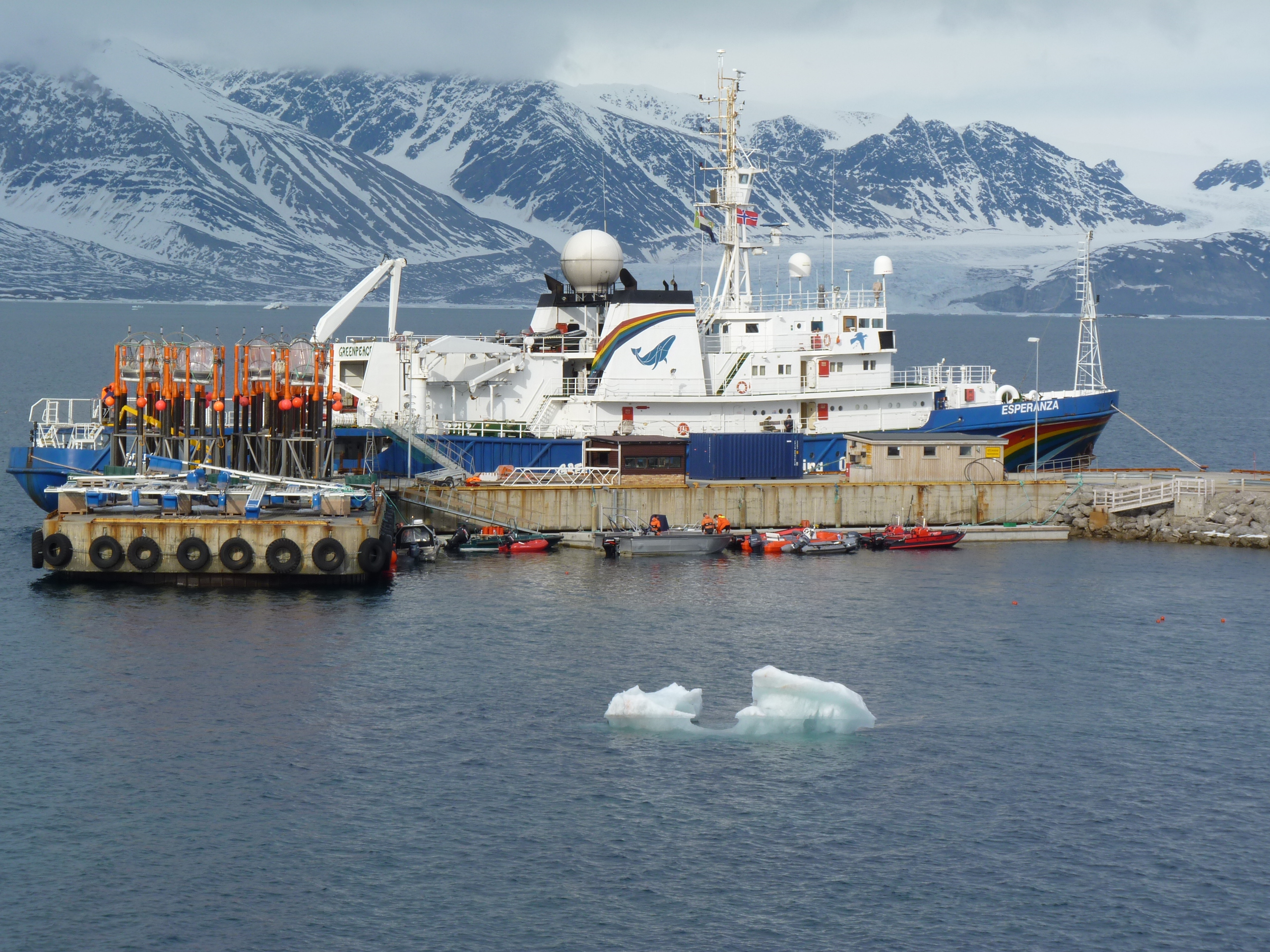

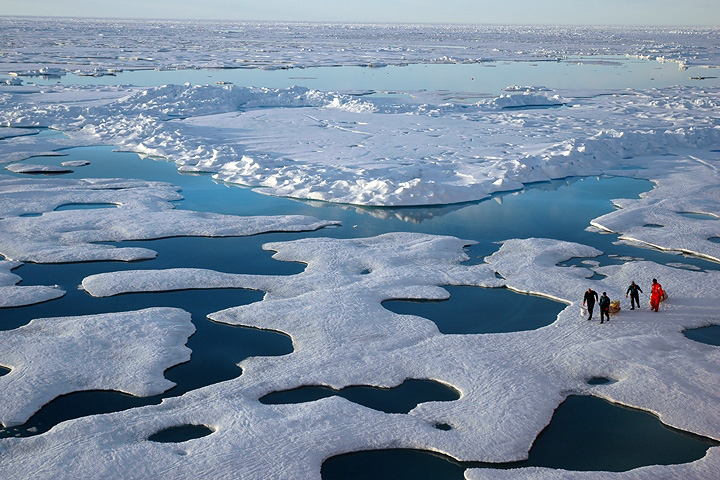

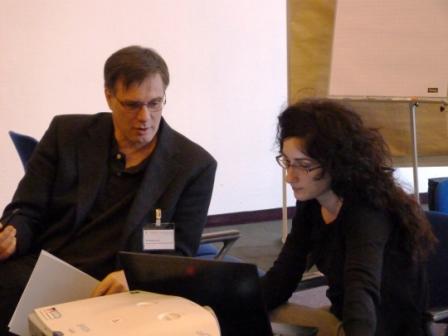
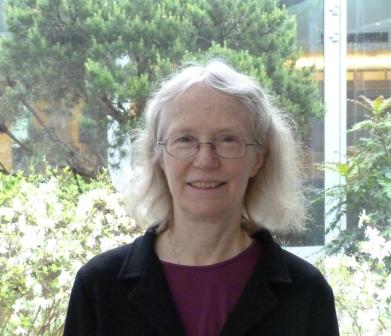

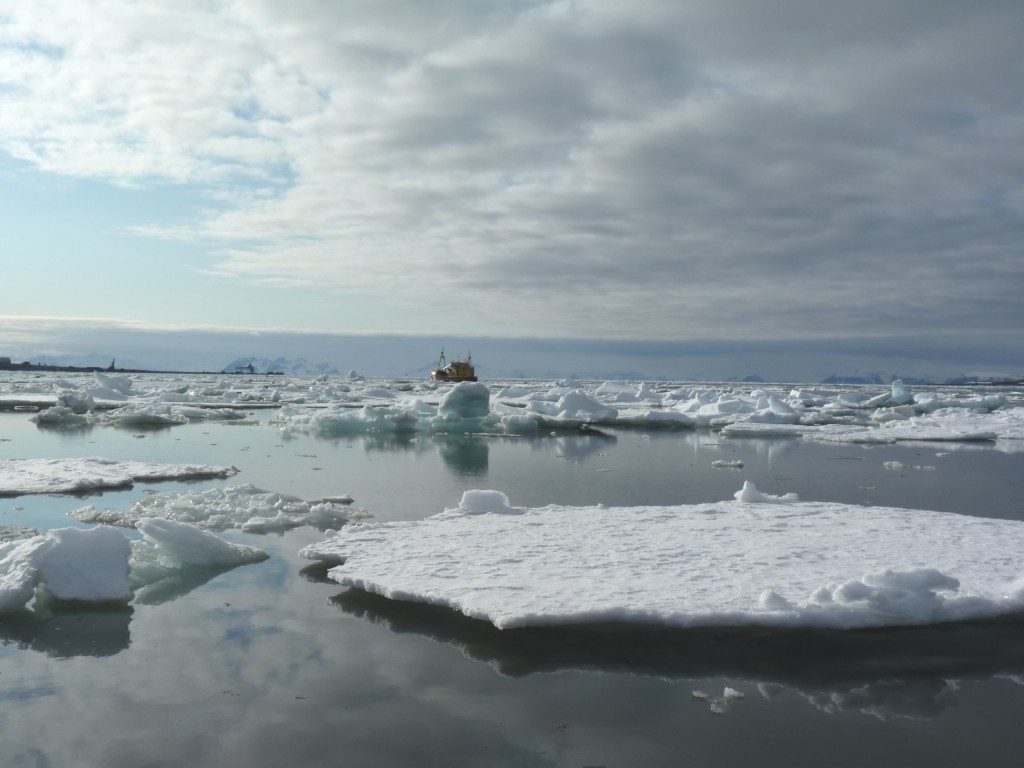
















Feedback